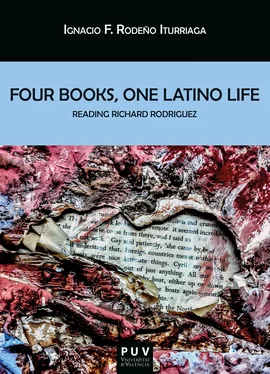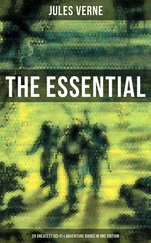Due to the significance of context, the concept of autobiography as the literary reproduction of one’s life has been replaced with the notion of autobiography as a performance; that is, the re-creation of the self in the time of writing. This evolution was already traceable in the early works by Georges Gusdorf, who asserted that autobiography “effects a true creation of self by the self” (44) and as a result readers have access to a “new and more profound sense of truth as an expression of inmost being.” (44) Because of the intended manipulation of the discourse by the author, in order to affect the reader as well as to build an apology or justify the protagonist’s actions, one must detach autobiography from the concept of truth, to which it was closely related originally. The early forms of autobiography stem from the Christian model of confession, and thus were fixed around the belief that what the author poured on the pages was the truth. If the text is considered a construct, this belief cannot be relied on. In fact, contemporary studies in narratives of the self reject the concept of autobiographical truth as something external to the self, something objectively verifiable, and replace it with a much more elusive definition. Autobiographical truth is an internal concept, created by the self. Truth, as alluded to in the previous section, becomes subjective rather than objective, and therefore the mechanisms of verification of truth become far more complex, if at all possible. This opens the flood gates to new considerations, among which the one that interests this study is that autobiography, when considered as an act of self-creation, becomes a rhetoric artifact.
Along those lines, Paul John Eakin maintains that autobiography is a form of self-invention that is being produced at the time of writing, and which is parallel to the person’s access to identity at the time of language acquisition. For Eakin “the writing of autobiography emerges as a symbolic analogue of the initial coming together of the individual and language that marks the origin of self-awareness.” ( Fictions 213) Eakin, however, does not clarify what he means by that “symbolic analogue.”
Another reaction to the considerations that derive from the shift of emphasis in autobiography to the moment of its writing is that which centers on the control the reader has over the text. As already stated, this is a point of view upheld by Elizabeth Bruss, who asserts that autobiography functions as illocutionary acts. Philippe Lejeune also reflects on the role of the reader. To this regard, Paul de Man states that critics such as Lejeune maintain that “the identity of autobiography is not only representational and cognitive but contractual, grounded not in tropes but in speech acts,” (71) which turn the reader into a significant authority.
At the beginning autobiography was regarded as mimetic; then, with the shift from text-centered towards the notion of subject, de Man used the figure of prosopopoeia as a trope for autobiography. With the increased interest on the figure of the other, that trope changed. Scholars were aware that the writer of narratives of the self was cognizant of an implied reader and, therefore, the text was being seen as an address to the reader. For Paul de Man, “the restoration of mortality by autobiography (the prosopopeia of the voice and the name) deprives and disfigures to the precise extent that it restores. Autobiography veils a de-facement of the mind of which it is itself the cause.”(81) This refutation of autobiography as mimesis aimed to restore a life implies that the genre is more than a simple restoration or recount of a life. Autobiography is seen now as a referentially-productive discursive practice. Narratives of the self provide life with form and meaning, constructing a meaning of life by means of refutable discourses. Therefore, autobiography is in the end a performative act, not a mere cognitive function.
Turning our eyes now towards the so-called minorities, when it comes to draw a markedly feminist autobiography, critics like Sidonie Smith, within the frame of Women Studies, also center the argument in the time of writing when they affirm that autobiography is an interpretative act of the past, and that because of its interpretative nature, this act is neither fixed nor completely recoverable from the present time of writing. One of the contributions of the feminist theories to the field of autobiography –and one which is particularly relevant to the so-called ethnic autobiographies– is the unending exploration of a variety of discourses, at times contradictory among themselves, that take part in the construction of feminine subjectivities. This is something that Smith underscores. In this sense, the creation of a history of subjectivities –promoted mostly by Michel Foucault– has produced a comprehensive and detailed analysis of the discourses that take part in the construction of said subjectivities through different cultures and different times. In other words, identity is not merely expressed in autobiography. Rather, it is created, constructed, at the time of writing by means of a number of collectively shared discourses
As in any performance, the autobiographical discourse is aimed towards an Other. Similar to what happens in the realm of the legal framework, prosopopeia in autobiography appears along apostrophe, another trope that has a key role in the ethic and discursive endeavors of the genre. Apostrophe is a form of beckoning the receptor’s attention –in this case the reader’s– which turns the text towards the other. Autobiography is, thus, a text written for the Other, rather than for the self. On the one hand, apostrophe brings out the self’s alterity and the creation of the self as a response to the Other. On the other hand, it reveals that autobiographical truth is not something that pertains to the past but to the present time of writing, and the future time of reading. Hence, what matters is not what is being said but the practice of saying it: the illocutionary act.
These perspectives bring about a political dimension to autobiography that gives narratives of the self a sort of ethical turn. Considering that the self is not autonomous, but rather it originates as a response to the other, that response results in responsibility towards the Other. This responsibility that constitutes the initial essence of the self is the core of ethics. This notion of ethics is devoid of morality; rather, it is the idea of ethics that Emmanuel Levinas brings forward: ethics as the domain of the other. By proposing that the other comes before the self, that it antecedes the subject, Levinas displaces the subject from the center. Nevertheless, this decentralization does not involve a neither a reduction nor a devaluation of the subject’s obligations and competences. As Levinas argues, even though deposed, the subject remains a singular entity because nobody else can respond for it. Nobody can take the place of another, and by the same token nobody can take responsibility away from, or for, any subject. In other words, the discursive dimensions of autobiography –as both an attempt at cognitive self-reconstruction, and as a performative act– that make it political are linked to the ethical dimensions of the genre.
This ethical dimension, the inexcusable need to respond to the Other, manifests itself in autobiography through the rhetorical figure of the apostrophe. It is this dimension too that allows for the blurring of the distinction that Lejeune established between autobiography and essay. Because the subject has been displaced from the center of the discourse, autobiographers necessarily write through the intervention of other discourses, be them scientific, philosophical, psychological, historical, sexual, religious, journalistic, etc. These discourses are located in the social context, and have become ingrained in the self. By not being visible, they are helped into becoming disguised as the personal truth of the writer. Autobiography goes beyond re-presentation of the self, or restoring the self from the past, and, like any essay, undertakes an interaction with the other, with the world, that orients the writing toward the future. It is no surprise, then, that autobiography can adopt the form of an essay.
Читать дальше












